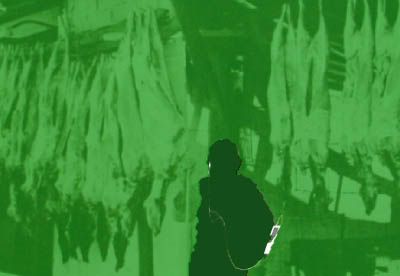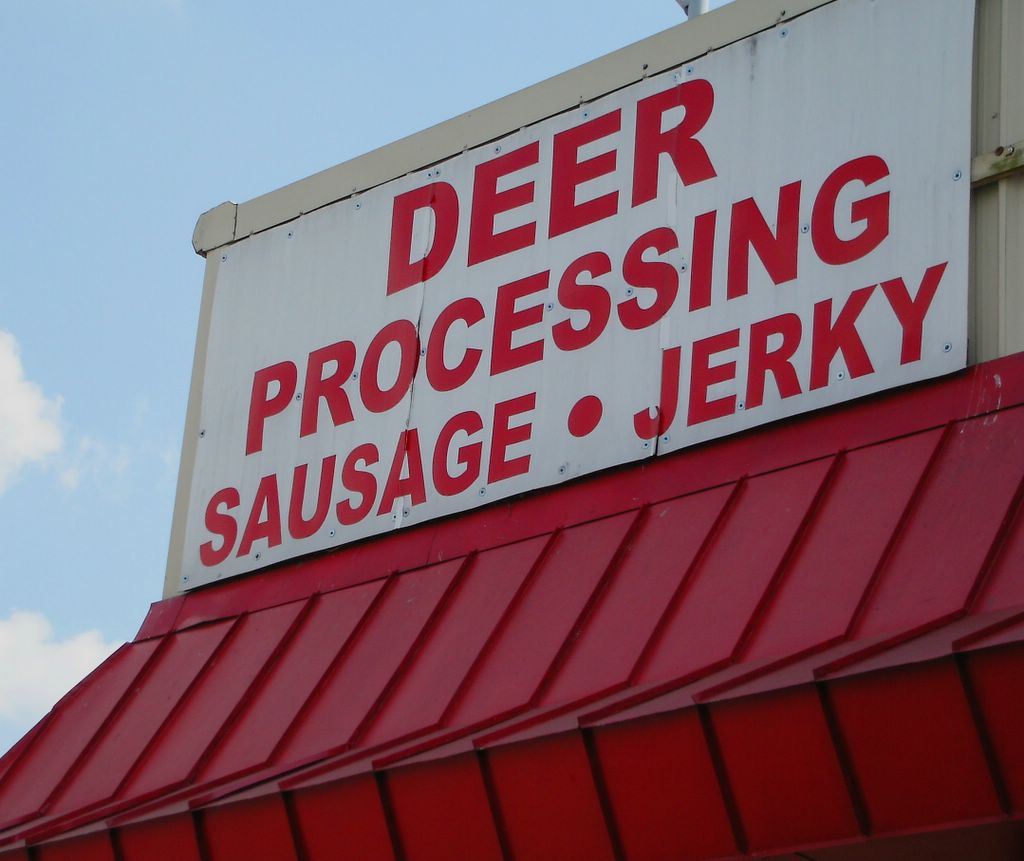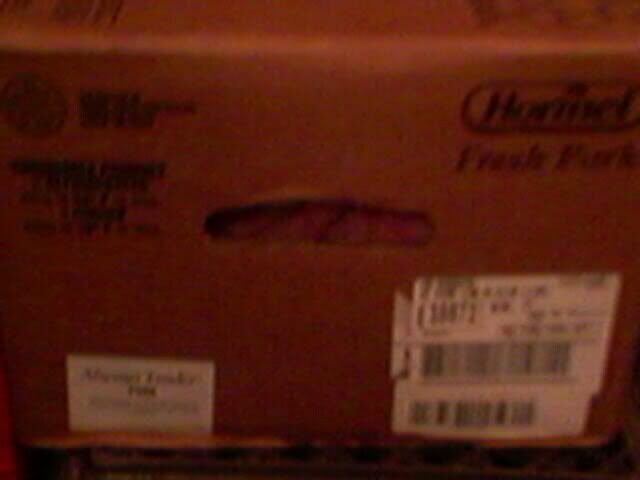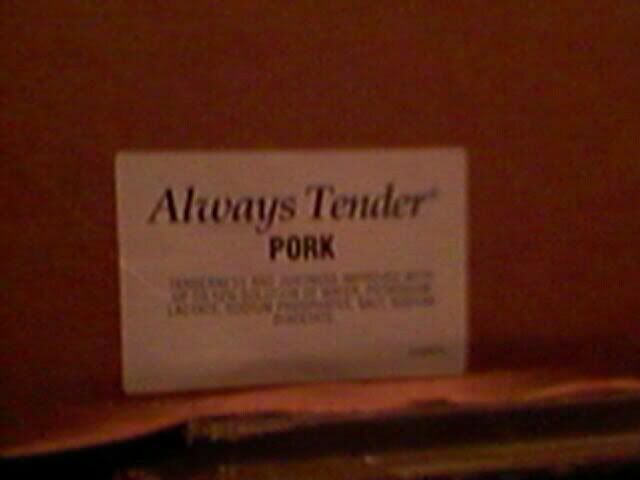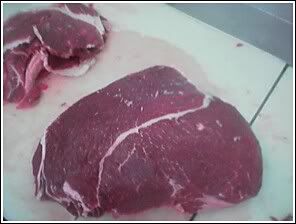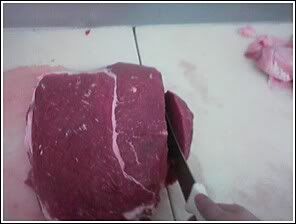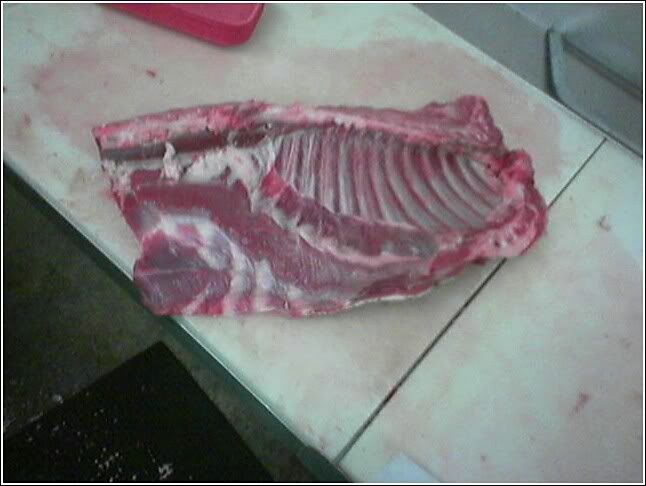The Flat Iron steak. You see and hear about it in TGI Friday and Chili's commercials. You've seen it on some 1 and 2 star restaurant menus lately. What is it? Why haven't we heard about it before now? Is it a worthwhile cut of meat? I'm going to answer all of these questions.
What it is: The Flat Iron steak is a relatively new cut of steak. It is rather untraditional, as it takes a defter touch while cutting, cooking, and serving. Also, because of the anatomy , there are only 2 to 4 flat iron steaks per head of cattle, so butchers didn't traditionally place these cuts in the meat case, as there wouldn't be enough to display.
More specifically, the Flat Iron is from the Top Blade, which is off the shoulder of the animal. Here is a boneless shoulder, the top blade is the part that has been removed and is next to it.
 Click Here to see Full Size
Click Here to see Full SizeNormally this muscle is cross-cut into top blade steaks. However, these steaks are tough and full of connective tissues (gristle). Instead, Flat Irons are cut from the two layers of the top blade and have all of that connective tissue removed. When sliced thin, on the bias, incredible marbling is apparent.
Why haven't we heard about this cut until now?: Well, as previously mentioned, this is an non-traditional cut. But, in 2002, the National Cattleman's Assc. used the
Checkoff Program, (a very cool program itself) to commission a muscle profiling study. In this study between NCBA’s Center for Research and Technical Services in partnership with the University of Florida and the University of Nebraska where every major muscle of the animal was analyzed separately for flavor and tenderness. The reason behind commissioning this study was to find better, more efficient cuts from the Chuck and the Round for both retail and food service uses. The results were pretty surprising. One of the most surprising things the study found was that the Flat Iron is in fact, the second most tender cut of meat from the steer, after the tenderloin. This cut then became the center star in a new promotional push by the NCA entitled "Value Cuts".
Is it a worthwhile cut of meat? The Flat Iron is, in this butcher's mind, one of the most versatile pieces of beef. It takes to a marinade like no other, it's tender beyond belief, and you can cook it with much success in many methods. Plus, it's cheap. Since it is from the shoulder, it can be found for as little as $3/lb here in the Midwest, and probably not much more than that elsewhere. You can grill it, use if for stirfry meat, use it for fajitas, braise it, fanfry it. Really, it is a great little cut that hopefully you will want to go out and try. If your butcher doesn't carry it, ask them to do some for you. IF they dont know how, refer them to the NCA's site, beef.org, or explain to them what I just showed. It will be worth your time.
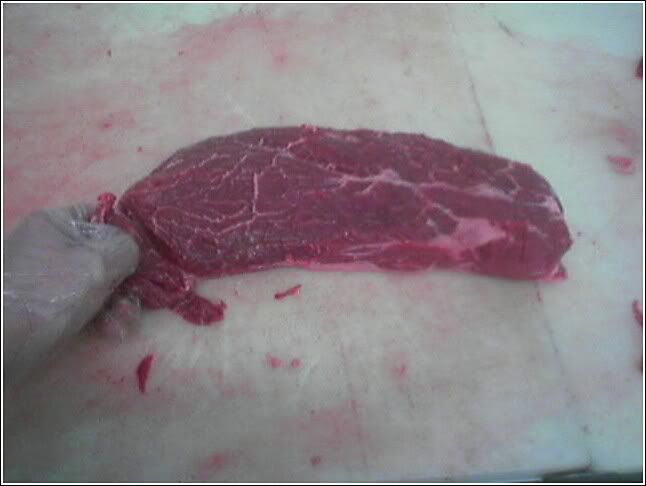
Shown after removing the outside connective tissues and the fat layer. Nose blocked off
Nose blocked off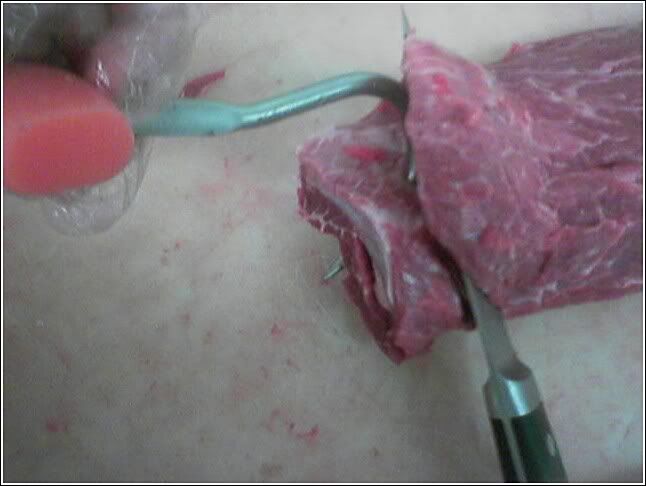
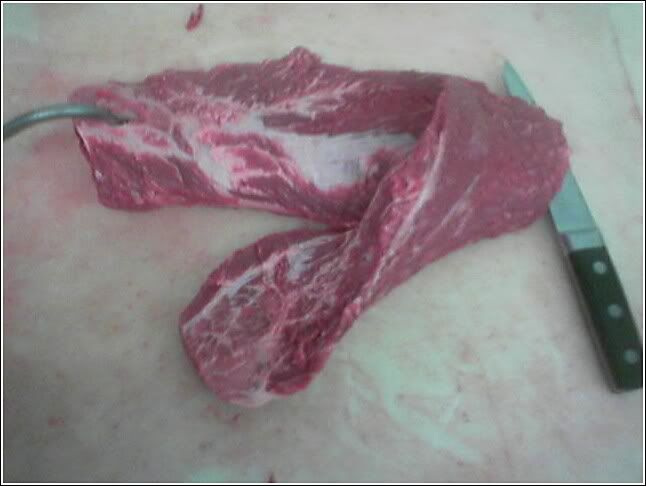 Using a meat hook to help remove the internal connective tissue.
Using a meat hook to help remove the internal connective tissue.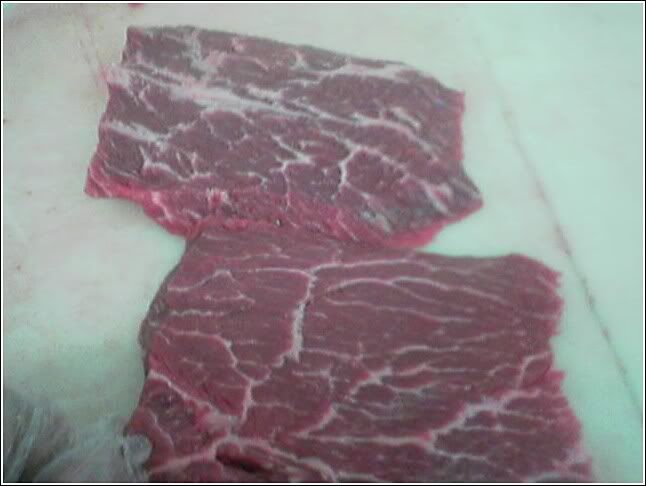
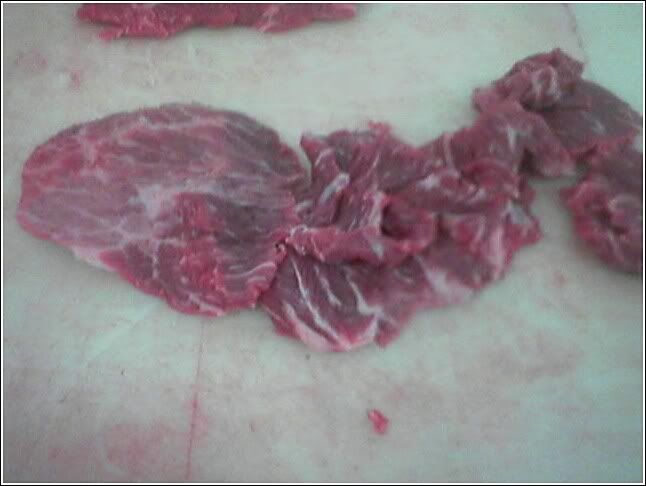 Look at all that amazing marbling!
Look at all that amazing marbling!
